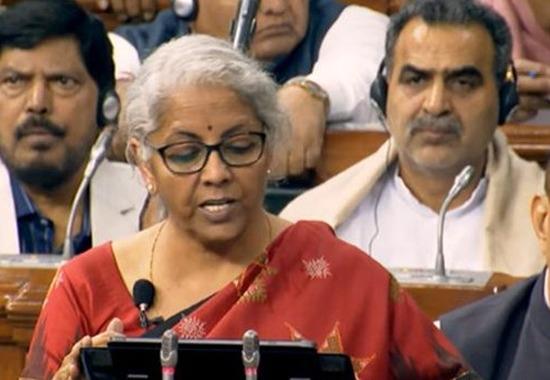Union Finance Minister Nirmala Sitharaman on Wednesday tabled Budget 2023 in the parliament. Finance Minister Nirmala Sitharaman stated that in Budget 2023-24 priorities have been given to inclusive development, reaching the last mile, infra and investment, unleashing the potential, green growth, youth and financial sector. However, it was Finance Ministry's decision on Income Tax slabs which broke the the internet and even won an applause from the opposition in the house. To be precise, FM raised the tax rebate limit to Rs 7 lakh under the new tax regime. This means people with income up to Rs 7 lakh per annum will effectively pay no income tax. "Currently, those with an income of Rs 5 lakhs do not pay any income tax and I proposed to increase the rebate to Rs 7 lakhs", FM Sitharaman announced.
"The new tax rates are 0 to Rs 3 lakhs - nil, Rs 3 to 6 lakhs - 5%, Rs 6 to 9 Lakhs - 10%, Rs 9 to 12 Lakhs - 15%, Rs 12 to 15 Lakhs - 20% and above 15 Lakhs - 30%, " says Union Finance Minister Nirmala Sitharaman.
Before Budget 2023 Tax slabs explained-
When it comes to the Union Budget, common people, businessmen, and industries keep an eye on the income tax slab rates. In India, the income tax department imposes taxes on individual taxpayers based on a slab system. The slab system indicates the different tax rates for different ranges of income. The taxpayers have to pay taxes to the government based on the income slab they are part of. The tax rates go up with an increase in income. The government operates on the basis of this slab system to ensure that the individual is paying a fair share of tax based on their income. Based on their age, the Government of India has divided taxpayers into three categories-
Individuals (aged less than 60 years) including residents and non-residents
Resident Senior citizens (60 to 80 years of age)
Resident Super senior citizens (aged more than 80 years)
Notably, in India, there are two types of tax regimes- Old Tax Regime and New Tax Regime
The old tax regime taxed citizens
Less than Rs 2.5 lakh - Nil
Rs 2.5 lakh to Rs 5 lakh - 5% (rebate applicable)
Rs 5 lakh to Rs 7.5 lakh - 20%
Rs 7.5 lakh to Rs 10 lakh - 20%
Rs 10 lakh to Rs 12.5 lakh - 30%
Rs 12.5 lakh to Rs 15 lakh - 30%
Over Rs 15 lakh - 30%
It is pertinent to mention here that in 2020, the Centre introduced the new tax regime for the subsequent financial year.
The new tax regime and taxed citizens
Less than Rs 2.5 lakh - Nil
Rs 2.5 lakh to Rs 5 lakh - 5% (rebate applicable)
Rs 5 lakh to Rs 7.5 lakh - 10%
Rs 7.5 lakh to Rs 10 lakh - 15%
Rs 10 lakh to Rs 12.5 lakh - 20%
Rs 12.5 lakh to Rs 15 lakh - 25%
Over Rs 15 lakh - 30%
(THIS IS A DEVELOPING STORY)
